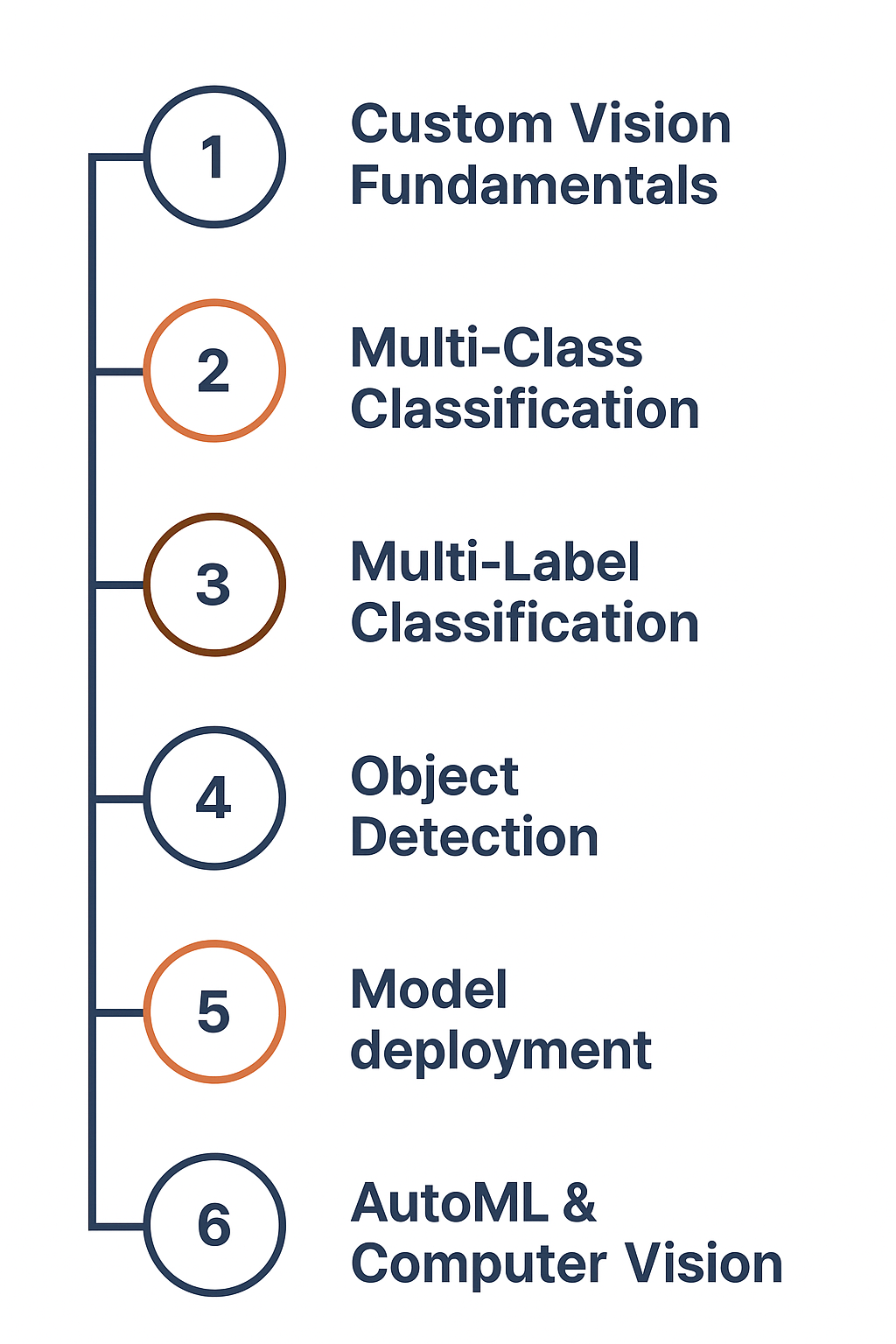In this section we will introduce a powerful, simple-to-use tool from Microsoft Azure: Custom Vision. At its core, Custom Vision is a flexible platform for training image-based machine learning models. It allows researchers and developers to build, test and deploy image classifiers and object detectors with minimal setup. The platform is designed to be accessible and intuitive, yet powerful enough to support sophisticated research use cases.
Types of Classification
Custom Vision supports a range of image analysis tasks, including multi-class, multi-label and object detection workflows. Each of these serves different purposes depending on the structure and complexity of your data.
Multi-Class Classification
Assigns each image to a single category from a predefined set of classes. This is the simplest form of image classification where each image receives exactly one label.
Multi-Label Classification
Allows an image to belong to multiple categories simultaneously. This is useful when images contain multiple objects or features that warrant different classifications.
Object Detection
Adds the ability to localise and classify individual objects within an image using bounding boxes. This approach not only identifies what objects are present but also precisely where they are located in the image.
These workflows will be explored in more depth in the sections that follow.
Why Use Custom Vision in Research?
Custom Vision is particularly valuable in research settings as it enables rapid prototyping and deployment of machine learning models without the need for deep expertise in AI or computer vision. It provides a web-based interface for intuitive model building and also supports integration with Python notebooks and APIs for more advanced workflows.
Researchers across biomedicine, environmental science and engineering can use Custom Vision to automate image analysis, detect subtle patterns that are difficult to identify manually, and build tools that increase the speed, accuracy and reproducibility of visual data interpretation.
Whether you're building a tool to triage histopathology slides, classify satellite imagery or identify features in microscopy datasets, Custom Vision offers an efficient, scalable route into AI-powered image analysis.
